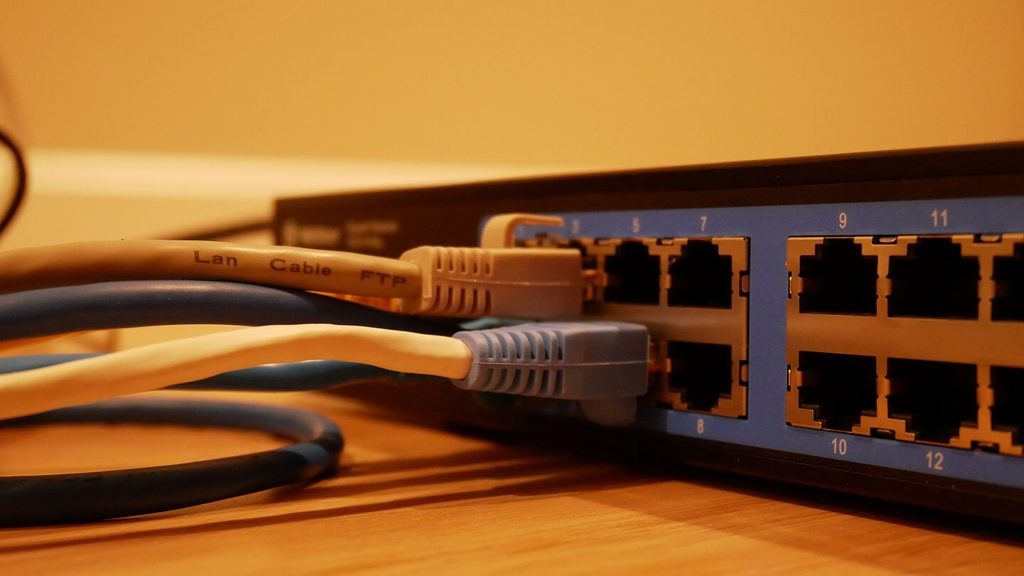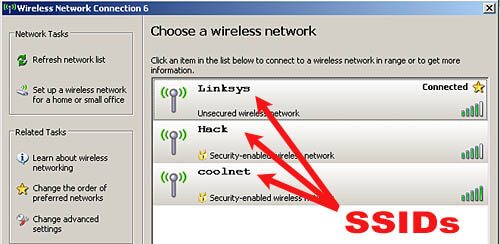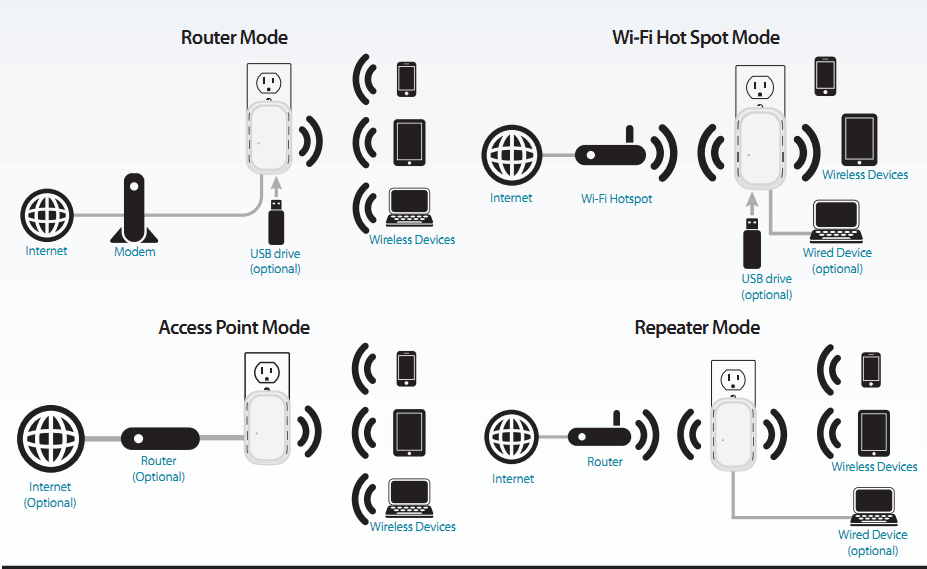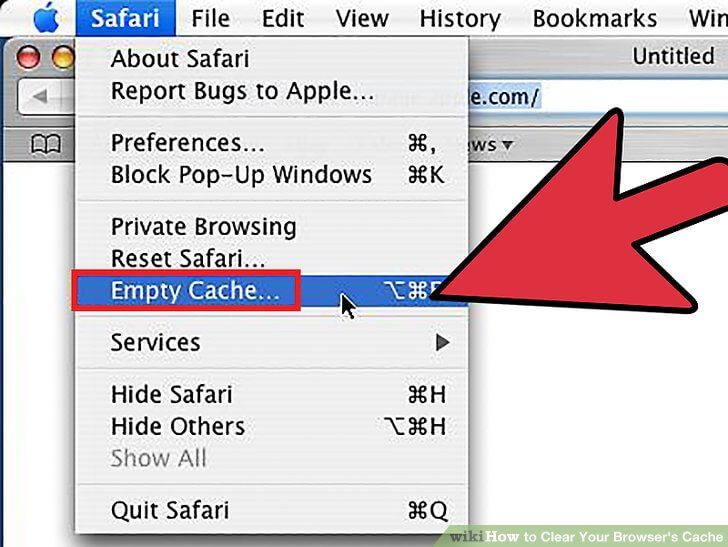- Do I Need a WiFi Booster (extender or repeater) and Do They Work?
- What is a WiFi Extender
- What is a WiFi Repeater
- How to Set Up a WiFi Extender
- Other Ways to Improve WiFi Speed
- How to Set Up Netgear WiFi Extender
Different systems use different types of wireless technology. For example, if you have a wire-free keypad, it uses a wireless connection to communicate with your computer. A common type of wireless is Bluetooth.
Some laptops, smartphones, tablets and other popular devices can use WiFi to access the web. WiFi is simply wireless for the internet. A good way to understand how the technology works is to think of a portable phone. A portable home phone has a docking station that’s plugged into a telephone jack.
The docking station has an antenna that sends the telephone signal to the phone wirelessly, allowing the phone to have a signal while being wire-free. The basic concept of WiFi is very similar to a portable phone. A router sends a signal to a WiFi-capable device. The device then uses the signal to connect you to the internet without needing to use wires.
Although various types of wireless work pretty well, they have their limitations.
With WiFi and telephone signals, the farther you travel from a router or docking station, the weaker the signal becomes; luckily, it’s easy to improve internet signals with the help of WiFi extenders and repeaters, which are both WiFi boosters. Additionally, read our post if you want to learn how to set up a Wi-Fi extender for the best possible signal.
Need assistance setting up one of these devices? Call and connect remotely with HelpCloud Technician by-the-hour and we’ll walk you through it.
Do I Need a Booster?
There are a few common signs that indicate the need for a WiFi booster.
One of the most obvious is a dead spot. In a dead spot, there is no WiFi signal at all. Although the reasons this happens differ, it’s often because the WiFi device is out of reach of the router’s signal.
Walls and other objects can also create dead spots. Near a dead spot, it’s not uncommon for a signal to be significantly reduced. If your internet is slow around specific areas of the house, you might need a booster to fix the issue.
Another benefit of a booster is the ability to use WiFi outside of the home. As the internet becomes more prominent, people want to use WiFi in more places. If you’re grilling in your backyard, it’s nice to stream music over WiFi, look up recipes on the internet, etc; interestingly, this is an especially advantageous benefit for individuals with special needs.
Older folks who use internet-enabled safety devices and call buttons may fall in the backyard, garage or somewhere that doesn’t traditionally have great coverage. With a WiFi extender, dead spots and bad connections can be improved to help ensure the internet is accessible when it’s needed most.
How to Set Up a WiFi Extender
Read our post on how to set up a Netgear Wi-Fi Extender.
WiFi Extender
WiFi extenders are a type of WiFi booster. A WiFi extender increases the range a wireless signal travels from a router through a wired connection. Because WiFi extenders are wired, they provide stable, strong connection points to your network.
Your WiFi signal depends on several things, like where a wireless router is placed in your home. If your router is in a top corner office, for instance, you might find that you have a poor internet connection on the opposite side of your home in the basement.
Distance and obstacles often weaken your signal. As a device travels farther from a router, the WiFi signal is diminished. Objects, such as thick brick walls and floors, can also impact a signal’s strength greatly.
If your wireless signal doesn’t work everywhere you want it to, you may try to relocate the router. However, if the router can’t be moved or relocation isn’t helpful, you can likely benefit from an extender.
Extenders connect with existing WiFi networks. Once connected, an extender can serve as a connection point for a device that’s out of range. Essentially, an extender connects to the router’s WiFi signal and then transmits its own signal. In other words, when a device is outside of a router’s normal WiFi range, an extender can help connect the device to the router.
There are a few things you need to know before using an extender.
First, it should be placed in a central location. It needs to be close enough to the router to get a strong signal and far enough away that it broadcasts its own signal into the desired area. Also keep in mind that the wireless router and the extender will have different names, also called SSIDs.
To make sure you’re using the most powerful signal, you will need to know what SSID you want to connect with. If you are having any kind of difficulty installing, using or troubleshooting your home’s WiFi, strongly consider reaching out to HelpCloud Technicians for remote support to help resolve the issue.
WiFi Repeater
Like WiFi extenders, WiFi repeaters are a type of WiFi booster. What is different, however, is that a WiFi repeater is wireless. An extender is wired. Within a repeater is a technology that resembles two wireless routers.
One of the wireless routers in the repeater connects to the existing WiFi network. The other wireless router contained within the repeater transmits the signal farther to boost the range.
Using the same frequency as a router, the repeater wirelessly connects to a router. Since the same frequency is used, bandwidth decreases by half. Larger bandwidths provide faster internet connections. Bandwidth is essentially the amount of information your connection can handle at any given time. With slow bandwidth, you might be able to do things like look at photos online but not videos.
As bandwidth increases, the rate at which you can see photos and the availability of streaming videos improves. So, a 50 percent decrease in bandwidth created by a repeater leads to much slower speeds. Due to the reduced bandwidth, most repeaters go hand in hand with speed loss.
Due to the wireless nature of a repeater, it has unique upsides and downsides. For one, there is no need for cords. Extenders need to be plugged into an Ethernet port or another connection device.
Repeaters are totally wireless. The benefit of no wires is that it’s easy to change the location of a repeater. The downside is that your connection will be susceptible to interruptions from stereos, walls, microwaves and other things that can hinder a wireless signal’s strength.
Other Steps That Improve Speed
Power cycling, turning a device on and off again, is often a quick and effective fix.
If your internet seems slower than normal, turn off your modem for a full minute before powering it up again. Although it seems too simple to work, this trick is often an effective way to clear various problems that can slow down your internet speed.
Another fast fix is to clear your browser cache.
The browser you use to access the internet has something called a cache. A web cache temporarily saves different types of documents and online information. The longer your cache saves information without being cleared, the more your internet speed will slow.
Every so often, it’s wise to clear the cache on your browser. To learn more about how to clear your cache, reach out to HelpCloud Technicians for remote support.
You may also be demanding more of your network than it can take. If you are using multiple internet-based programs at once, streaming various videos while downloading content or otherwise carrying out a lot of functions at one time, your internet may slow down.
Alternatively, if you are streaming video on your WiFi and another individual in the home is also trying to stream video at the same time, your connection may slow. In this case, the best way to improve speed is often to upgrade your wireless plan.
A virus on your device is another element that can slow down the speed at which you access the internet. There are several free applications available that can scan for viruses, but it’s hard to know what ones to trust.
Generally, it’s best to work with an established computer support company to see if a virus is slowing down your internet speed. With the right help, the virus can be detected and safely removed while mitigating potential overall damage.
Another easy way to improve your internet speed is to block data-heavy advertisements. Pictures, GIFs, auto-play videos and other ads can place a heavy burden on your internet.
Even if you don’t mind the advertisements, it’s likely they are slowing down your connection speed. To avoid this problem, consider downloading an ad-blocking program. A safe and secure advertisement blocker will help cut down on the ads you see, giving your internet speed more room to operate as it should.
Working With WiFi
WiFi is pretty amazing, but it’s not perfect. Simple objects, like thick walls or the floors between stories of a building, can greatly impact connection speeds. Fortunately, there is something you can do to help improve your WiFi: invest in a booster.
Whether you decide on an extender or repeater, chances are you’ll be very happy with the results.
If there is still connection speed trouble after you purchase and correctly install a booster, it might be time to reach out to your internet provider directly to make sure there isn’t a larger issue. You can also run a free internet speed test to make sure your connection is on par with what you’re paying to receive.
Remember to reach out to HelpCloud if you need help setting up this equipment.




